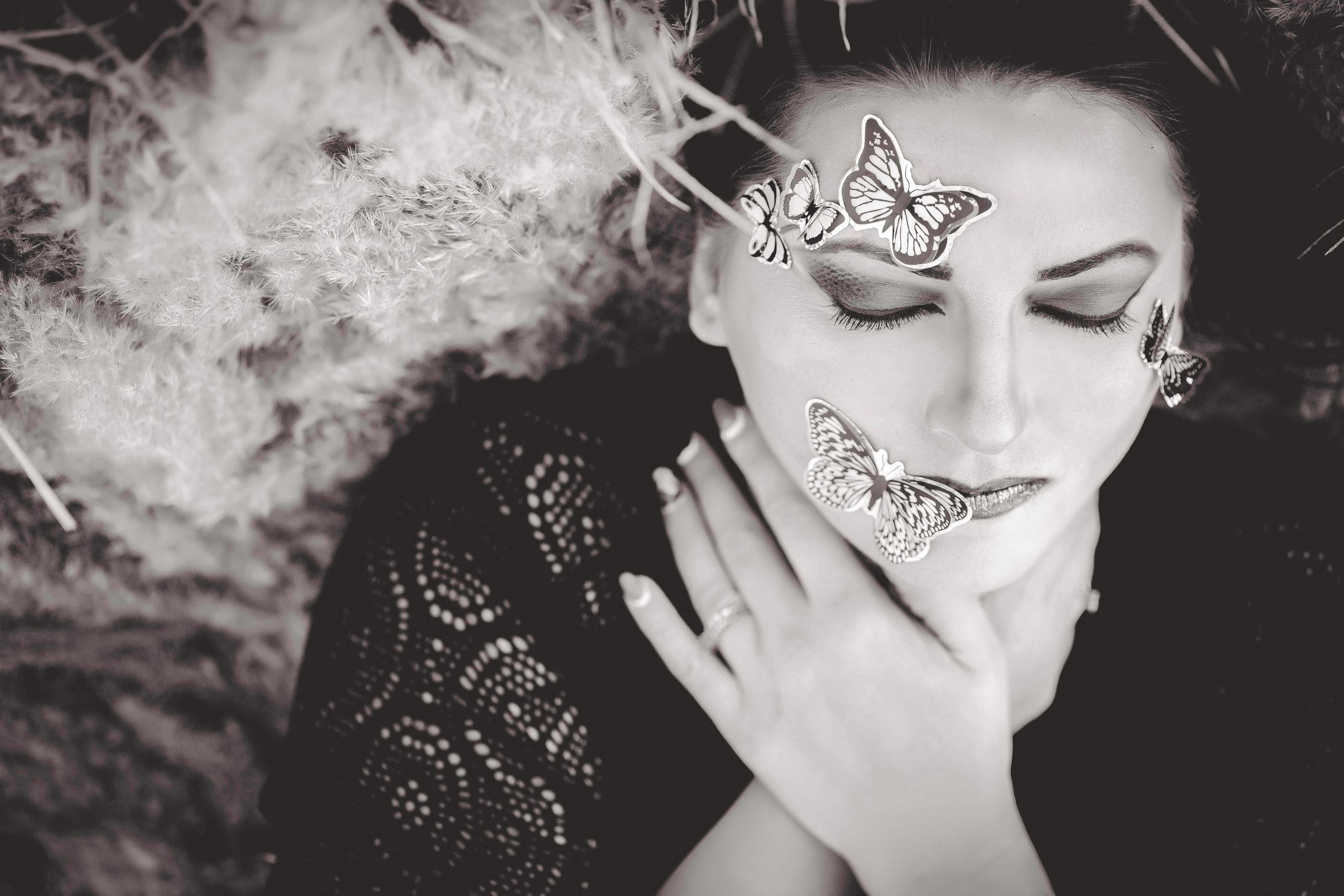Can You Wear Contacts With Dry Eyes

Have you ever experienced dry eyes while wearing contact lenses? Dry eyes can make wearing contact lenses uncomfortable and even painful. While the condition of dry eyes can be managed with proper treatment, some people may be wondering if they can wear contact lenses at all. The answer is yes, it is possible to wear contact lenses with dry eyes. With proper care and precautions, you can find relief from your symptoms and enjoy the convenience of contacts. In this article, we’ll discuss how to manage your dry eyes while wearing contacts and provide tips on how to find the right lenses for you.Yes, you can wear contacts with dry eyes. However, it is important to talk to your optometrist first to ensure that you have the proper lenses and lens care regimen for your eyes. This may include choosing the right contact lens for your eye type, using lubricating drops before inserting and removing lenses, or even switching to a daily disposable contact lens.
What Are The Effects Of Wearing Contacts With Dry Eyes?
Wearing contacts with dry eyes can be a challenging and uncomfortable experience. Without the natural lubrication of tears, contact lenses can cause irritation, redness, and pain. Dry eyes can also lead to an increased risk of infection due to the decreased ability for the eye to fight off bacteria and other pathogens. As such, it is important to take steps to protect your eyes when wearing contacts with dry eyes.
One of the most important steps is to ensure that you are using a contact lens solution that is specifically formulated for dry eyes. These solutions contain ingredients that help keep the lenses moist and comfortable while reducing irritation from debris or dirt buildup on the lenses. Additionally, it is important to clean your lenses regularly with a special cleaning solution for contacts with dry eyes. This will help reduce any build-up of proteins or lipids on the lenses which can further irritate your eyes and decrease contact comfort.
It is also essential to keep your contact lenses moisturized while wearing them. Using a rewetting drop or an artificial tear solution will help keep your lenses hydrated while reducing any discomfort from prolonged wear. Additionally, it is important to give your eyes regular breaks from wearing contacts by removing them at least once every day for at least 15 minutes. This will help reduce any strain on your eyes and will also allow them time to replenish their natural lubrication system.
Finally, it is crucial that you visit an optometrist regularly if you are experiencing any discomfort or changes in vision while wearing contacts with dry eyes. Your optometrist can determine if there are underlying conditions causing your dry eye symptoms and provide treatment options as needed.
In conclusion, wearing contacts with dry eyes can be uncomfortable and risky if proper precautions are not taken. It is essential that you use a contact lens solution designed for dry eye sufferers, clean your lenses regularly, use rewetting drops or artificial tears, take regular breaks from contact wear, and visit an optometrist regularly if symptoms persist in order to protect your eyesight and ensure comfortable contact wear experience.
What Are The Symptoms Of Dry Eyes?
Dry eyes symptoms include a stinging, burning, or scratchy sensation in the eyes; occasional blurry vision; stringy mucus in or around the eyes; sensitivity to light; eye redness; and a sensation of having something in the eyes. Dry eyes can also cause difficulty wearing contact lenses.
In more severe cases, dry eyes can cause excessive tearing due to irritation from dryness. This is because when the tear glands become blocked from lack of lubrication, they produce more tears as an attempt to hydrate the eye surface.
Also, people with dry eyes may experience fatigue while reading or after extended periods of time on a computer due to decreased blinking rate. An inability to produce enough tears can lead to chronic inflammation of the ocular surface and, if left untreated, can cause damage to the cornea.
It is important for people experiencing these symptoms to consult with their optometrist or ophthalmologist for diagnosis and treatment. With proper treatment and lifestyle changes, it is possible for most people with dry eye syndrome to manage their symptoms and keep their vision healthy.
Treating Dry Eyes Before Wearing Contacts
Dry eyes can be a major obstacle for people who wear contacts. It is important to treat dry eyes before wearing contacts in order to maintain healthy vision. There are several steps you can take to help reduce the symptoms of dry eyes and improve your contact lens experience.
The first step is to keep your eyes moisturized by using lubricating eye drops. These eye drops help to reduce the discomfort associated with dry eyes and can make contact lenses more comfortable. Additionally, lubricating eye drops can protect the surface of the eye from further irritation caused by contact lenses.
It is also important to ensure that you have adequate hydration throughout the day. Drinking plenty of water helps your body stay hydrated, and this will also help to keep your eyes moist. If you are a contact lens wearer, it is especially important to stay hydrated as this will help prevent your lenses from drying out during wear.
Finally, it is essential to take regular breaks when wearing contacts in order to give your eyes time to rest and recover from the strain of having a foreign object on them for extended periods of time. If it is possible, try taking a few minutes away from your contacts each hour in order to give your eyes some relief. This will help reduce any discomfort associated with dry eyes and improve overall comfort while wearing contacts.
By following these tips, you can ensure that you are properly treating dry eyes before wearing contacts so that you can enjoy clear vision without any discomfort or irritation.
What Is The Best Type Of Contact Lens For Dry Eyes?
Dry eye syndrome is a common condition that can affect your vision and comfort when wearing contact lenses. Fortunately, there are a variety of contact lens options available to provide relief for dry eyes. The best type of contact lens for dry eyes depends on a number of factors, including the severity of your symptoms, the degree of correction required, and your lifestyle.
Soft contact lenses are the most commonly used type of contact lens to treat dry eyes. They are designed to allow oxygen to pass through them, helping to reduce discomfort and dryness in the eye. Soft lenses also tend to be more comfortable than other types, making them an ideal option for those with milder cases of dry eye.
For people with moderate or severe cases of dry eye, daily disposable lenses may be the best choice. These lenses are designed to be worn for one day only and then disposed of properly. This eliminates the need for cleaning and storage solutions, which can irritate sensitive eyes. Daily disposable lenses also help reduce the risk of infection due to less exposure time with bacteria and other contaminants.
If you have very severe cases of dry eyes or require a higher degree of correction than soft or daily disposable lenses can provide, rigid gas-permeable (RGP) contacts may be worth considering. RGP contacts are made from hard plastic materials that allow oxygen to pass through them more effectively than soft contacts do, which helps keep eyes hydrated and comfortable all day long. They also provide sharper vision than soft contacts do because they maintain their shape better when worn in the eye.
No matter what type of contact lens you choose, it is important that you take proper care when handling and wearing them so as not to further irritate your eyes. Be sure to follow all instructions provided by your optometrist carefully so that you can enjoy clearer vision without compromising your comfort or safety!

Is It Safe To Wear Contacts With Dry Eyes?
Dry eyes are a common condition that can cause discomfort and blurred vision. Many people who suffer from dry eyes find it difficult to wear contact lenses, as the lenses irritate their eyes even more. But with the right precautions, it is possible to wear contact lenses safely with dry eyes.
The first step in wearing contacts with dry eyes is to make sure you choose the right type of contacts. Soft contacts are often better for people with dry eyes than hard or rigid gas-permeable (RGP) lenses. Soft contacts allow oxygen to pass through more easily, which helps keep your eyes hydrated and healthy. You should also consider using daily disposable or extended-wear contacts, as they reduce the risk of infection and irritation.
It is also important to use lubricating eye drops when wearing contact lenses. Artificial tears can help keep your eyes moist and comfortable while wearing contacts, and they may be prescribed by your doctor or optometrist. Make sure you follow all instructions for use carefully, as overusing lubricating eye drops can also lead to irritation.
You should also pay close attention to your contact lens hygiene routine when wearing contacts with dry eyes. Be sure to wash your hands before handling your lenses, and replace them regularly according to the manufacturer’s instructions. It’s also important to clean and disinfect your lenses every day using fresh solution, as old solution can harbour bacteria that could cause infection in already dry eyes.
Finally, be sure to take regular breaks from wearing contact lenses if you have dry eyes. Remove your lenses every few hours throughout the day if possible, so that your eyes can rest and recover from irritation caused by the lens material or solution residue on the lens surface. Following these steps will help you wear contact lenses safely with dry eyes.
How To Keep Your Eyes Moist While Wearing Contacts
Wearing contacts can be a great way to change up your look, but it can also lead to dry eyes. It is important to keep your eyes lubricated while wearing contact lenses to avoid irritation and discomfort. Here are some tips for keeping your eyes moist while wearing contacts:
• Use Artificial Tears: Artificial tears are eye drops specifically designed for contact lens wearers. They help keep your eyes hydrated and lubricated, reducing the risk of dryness and irritation.
• Take Breaks: Give your eyes a break by taking out your contact lenses every few hours. This will give your eyes a chance to rest and rehydrate.
• Drink Plenty of Water: Staying hydrated is key when it comes to keeping your eyes moist. Make sure you are drinking plenty of water throughout the day, as this will help keep your eyes lubricated.
• Use Humidifiers: If you live in a dry climate or an area with low humidity, consider using a humidifier in your home or office. This will help add moisture to the air, which can help keep your eyes from becoming too dry while wearing contacts.
• Avoid Wearing Makeup: Wearing makeup while wearing contacts can cause irritation and dryness. Try avoiding makeup as much as possible while wearing contacts, or switch to non-irritating cosmetics specifically designed for contact lens wearers.
Following these tips will help you keep your eyes moisturized and comfortable while wearing contacts. Remember to take breaks often and drink plenty of water throughout the day to stay hydrated!
Can Wearing Contacts With Dry Eyes Affect My Ability to Wear Them During Surgery?
Wearing contacts with dry eyes can complicate surgery. It’s crucial to assess eye health beforehand. If discomfort arises, consider consulting an eye care professional. Ultimately, the question remains, should you wear contacts for surgery? Prioritizing eye comfort and health is essential when making this decision to ensure optimal surgical outcomes.
Home Remedies For Dry Eye Relief When Wearing Contacts
Dry eye syndrome is a condition that can cause discomfort for those who wear contacts. It is caused when the eyes do not produce enough tears to keep the eyes lubricated. This can result in redness, itchiness, burning, or stinging of the eye. Fortunately, there are some home remedies that can help provide relief from dry eye symptoms when wearing contacts.
One of the most popular home remedies for dry eye relief is using natural oils and eye drops. Natural oils such as coconut oil, olive oil, and almond oil have been known to help with keeping the eyes lubricated and reducing symptoms of dryness. Eye drops made from chamomile can also be used to soothe itchy or irritated eyes.
Another home remedy for relieving dry eye symptoms while wearing contacts is taking breaks from wearing lenses throughout the day. This allows your eyes to rest and receive more oxygen, which helps reduce irritation caused by contact lenses. Additionally, when taking a break from contact lenses it’s important to make sure your hands are washed before touching your face or eyes in order to avoid any potential bacteria or germs that may be present on your hands.
Finally, increasing your intake of foods high in omega-3 fatty acids can also help with providing relief from dry eye symptoms while wearing contact lenses. Foods such as salmon, mackerel, walnuts, and flaxseeds are all great sources of omega-3 fatty acids which can help reduce inflammation and keep your eyes lubricated throughout the day.
By following these simple home remedies you should be able to find some relief from dry eye syndrome while wearing contact lenses. Remember to always follow the instructions given by your optometrist when it comes to caring for your eyes and contact lenses in order to ensure optimal health of your vision!

Conclusion
Wearing contacts with dry eyes can be a difficult task, but with proper care and management, it is possible to make wearing contacts more comfortable. It is important to use the correct type of lenses for your eyes, and to ensure that you are using a proper cleaning routine. Additionally, using lubricating eye drops can help reduce the discomfort associated with contact lenses and dry eyes. Overall, it is possible to wear contacts with dry eyes, as long as the person takes measures to reduce discomfort and keep their eyes healthy.
It is always best to consult with an eye care professional if you have any questions or concerns about wearing contacts with dry eyes. They can provide advice on the best type of contact lenses for your eye condition and can answer any questions that you may have. With the right advice and care, it is possible to wear contacts with dry eyes comfortably and safely.
